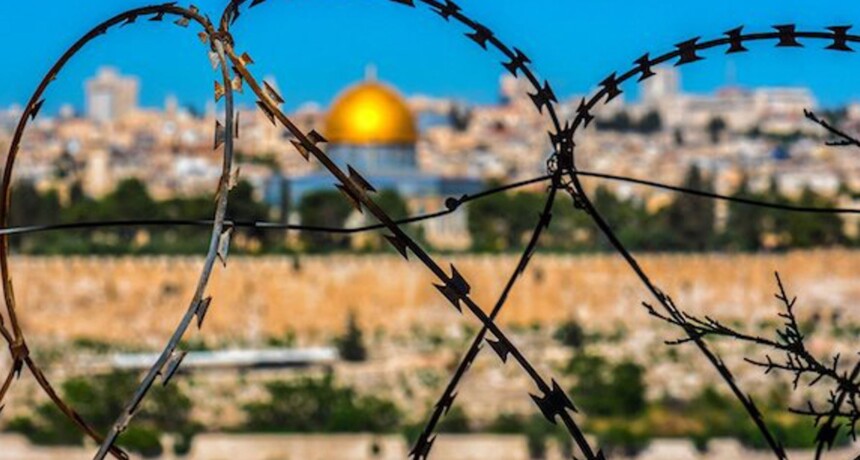[Read part one of this essay, “The Plan,” posted on Wednesday, Feb. 12.]
Part Two: The Disagreeable Agreement.
Establishing the Palestinians’ significant culpability for the lack of progress nevertheless does not mean that the Israelis should be encouraged to create territorial faits accomplis which cannot be tenable in the long run. Let us look once again at the map attached to the Trump Peace Plan. Quite apart from the fairness, morality and legality of the enterprise, for a geopolitical realist the establishment of clean-cut borders—based on a meaningful territorial compromise—is preferable to the creation of this confusing patchwork of Israeli mini-enclaves, security buffer zones, bridges, tunnels, and access roads, crisscrossing a three-tier archipelago of Palestinian pieces of real estate which are themselves surrounded by Israeli territory on all sides.
If the goal is an agreement, however reached, it is irrational for the Plan to treat the existence of all 15 Israeli settlements deep inside the West Bank, the “enclave communities,” as sacrosanct and eternal, and to draw the map accordingly. The judicious alternative is to revive the American offer presented at the 2000 Camp David summit. By annexing less than 10 percent of the West Bank, Israel would include within its new boundaries over four-fifths of some 650,000 people living across the 1967 Green Line, and still provide a decent territorial basis for the eventual creation of a Palestinian state. That state may never come into being, but it would be prudent for Israel and the U.S., which are obviously acting as one party in this affair, to provide a map which leaves that possibility open at some future date.
If the goal is unrestrained annexation, however, then the Plan makes perfect sense. At times it appears to have been tailored to anger the other side. It is insulting to offer a worthless patch of the Negev wasteland as compensation for a third of the richest land in the West Bank. It is even more insulting to suggest that the future Palestinian capital would be in the disconnected neighborhoods of Abu Dis, Kufr Aqb, and the Shuafat refugee camp. All of them are outside the security fence and none have ever been part of “Jerusalem” in any meaningful sense.
As Michael J. Koplow of the Israel Policy Forum has noted in his Jan. 30 essay, “Building a Better Trump Plan,” it is absurd to ignore the internal contradiction of removing neighborhoods that Israel claims are part of Jerusalem and yet claiming not to have divided the city. Either the Plan will keep the city united, in which case it cannot spin them off for a Palestinian capital in “Jerusalem”; or it accepts that these three spots are not actually “Jerusalem,” and that it is denying Palestinians a connection to the city. Koplow writes:
What it cannot do is claim both of these things simultaneously depending on which side is asking…. A realistic and implementable version of the Trump plan for Jerusalem would…look at the precise spots that Israel places roadblocks on Yom Kippur to divide the Jewish and Arab sections of the city, and use that as a basis for where an Israeli capital and a Palestinian capital should be.
It is in Israel’s power to annex as much of the West Bank as it wants, but it is not wise to do so. Geostrategic necessity demands control of the crest of the Judean Mountains and security supervision, rather than sovereignty, over the Jordan Valley. As Efraim Inbar points out in the February Fathom Journal, “Territorial division results in clear cut lines; functional division allows for an amalgamation of responsibilities which is politically problematic.” The conflict will continue for a long time, he contends, because the populations still have a lot of energy to fight for interests that are important to them. He writes:
For many in the West, peace is the most important value, but this is not true for Israelis and Palestinians here. Honour, pride, Jerusalem’s Temple Mount [Al Aqsa Mosque], are more important than peace and the Europeans don’t get that…. I do not believe we should be speaking in terms of solutions but rather in terms of managing and limiting the conflict for both sides. The conflict cannot be solved, it’s a zero-sum game and both societies are not tired enough to stop fighting. In the meantime, we should try to manage it within bearable parameters.
Bearable for now perhaps, but it is far from certain that Israel can impose indefinitely and at no cost such unilateral outcomes that are humiliating to the other side. Palestinian intransigence and Arab general aloofness notwithstanding, the real trouble with Trump’s plan is that it will not help Israel mature into a “normal” nation-state. Instead of solving the perennial problem of Jewish insecurity, the Jewish state paradoxically remains beset by it. As I wrote recently, annexing the Jordan Valley and the settlements may prove to be comparable to Germany’s annexation of Alsace and Lorraine in 1871: the value of the real estate west of the Rhine could not be matched by the political cost of having France as the perennial sworn enemy.
Right now Israel’s leaders may be able to realize their maximalist territorial and political goals, but that does not mean it is in Israel’s best interest that they do so. Since 2018 Arabs have outnumbered Jews between the River and the Sea. If there is no two-state solution, and if a single state with equal rights for all is incompatible with the maintenance of Israel’s character as a Jewish state, the only remaining alternative is an open-ended disagreeable arrangement which cannot but erode Israel’s moral legitimacy and democratic credentials.

Leave a Reply